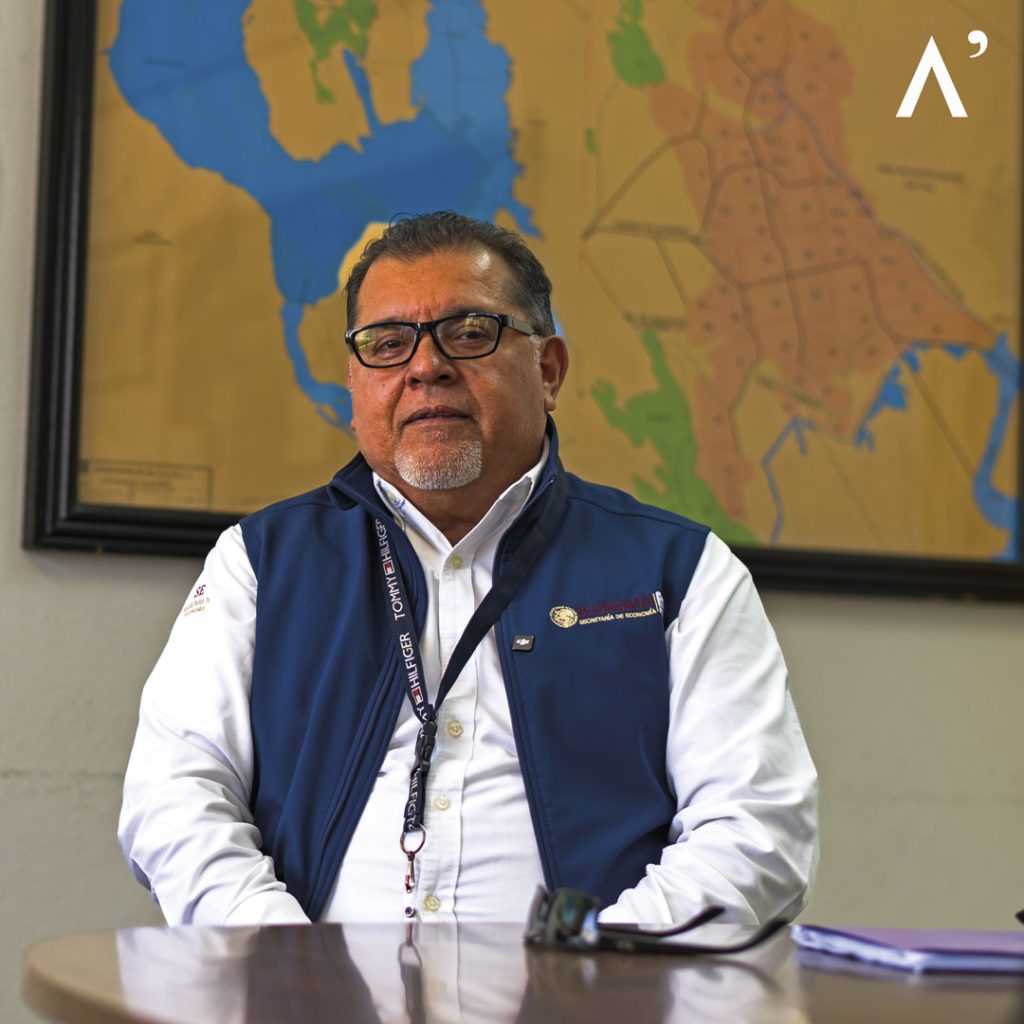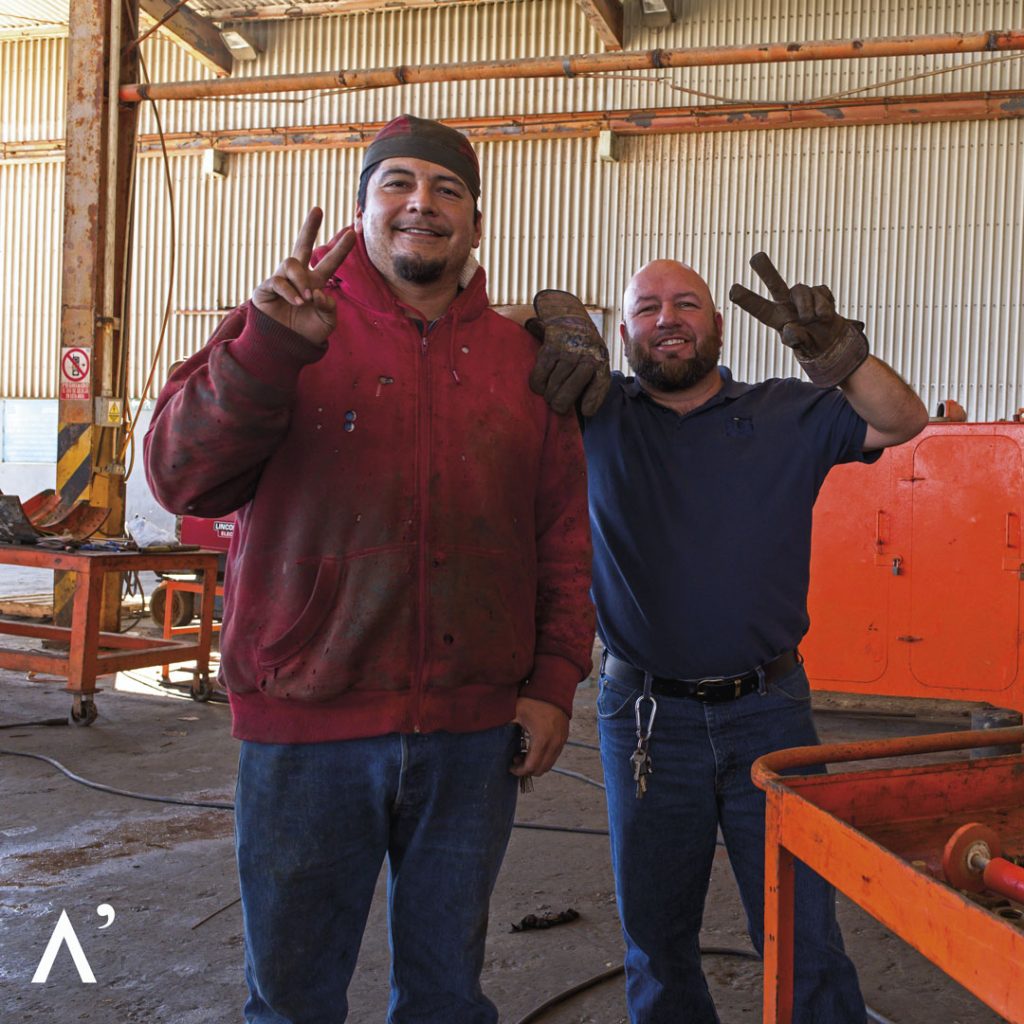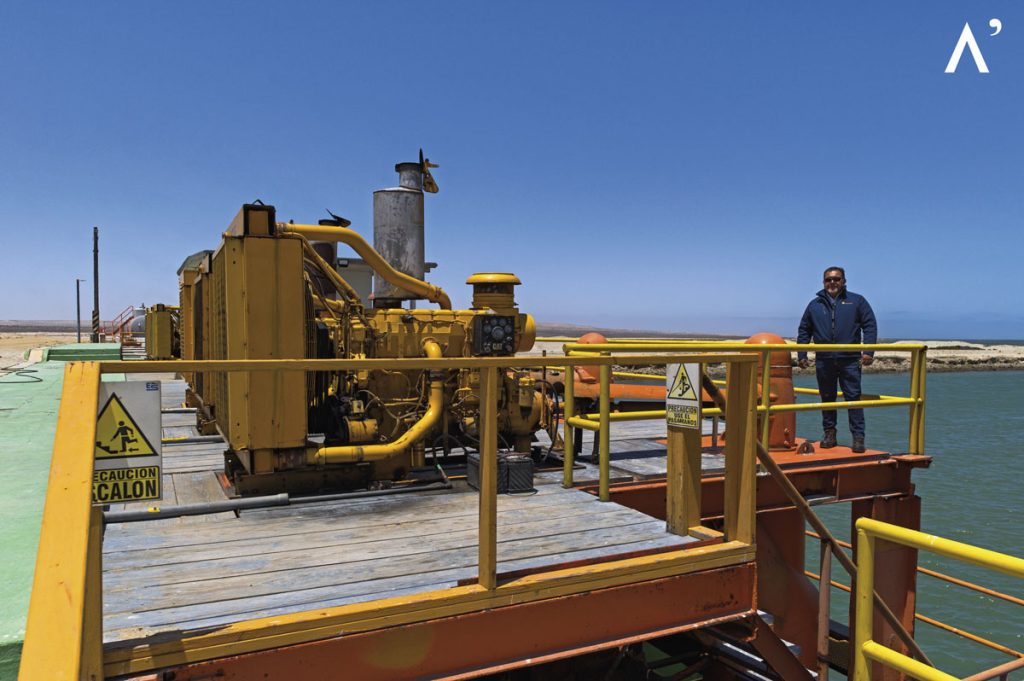The water surrounding Exportadora de Sal is a striking turquoise color. It shimmers under the sky and surrounds the world’s largest salt mine, which produces 7.18 million tons of salt annually. The salt mine has 281 km2 of evaporation vessels or concentration areas and 30 km2 of crystallization vessels in the lowlands adjacent to the Ojo de Liebre and Guerrero Negro lagoons.
The Engineer Gerardo Santiago Murillo, the Production Manager of Exportadora de Sal, S.A. de C.V. (ESSA), explains the production process of salt in Guerrero Negro. In the early 1950s, when the salt mines in San Francisco, California, stopped supplying salt to the U.S. West Coast paper industry, a group of American businessmen began looking for the best location to build salt production facilities to meet this specific market demand. Daniel K. Ludwig, the president of National Bulk Carriers, expressed interest in exploiting the salt mines of Guerrero Negro and initiated the necessary procedures with the Mining Development Commission of the Mexican Government at that time.
Thus, on April 7, 1954, Exportadora de Sal was established. The company currently produces regular, fine, coarse salt, ASTM salt, low bromine, and sodium salt. “The first shipment of salt was made on May 27, 1957, aboard the ship “Nikolos”, which sailed from Venustiano Carranza Port with 8,708 tons. Exportadora de Sal has grown from an area of approximately 89 km2 and a production of 79,790 tons of salt per year to an extensive operational infrastructure,” says the engineer. Santiago Murillo, who leads 1,200 workers between Guerrero Negro and Isla de Cedros.
He informs us that, besides providing ongoing employee training, they also supply them with safety gear tailored to their specific tasks. “Our joint safety commission conducts daily inspections to ensure that issues in each area are promptly addressed and corrected. Since we are ISO-14001 certified, we have implemented controls for handling hazardous substances and waste and a classified and controlled storage system for each type of waste, ensuring it is properly disposed of for final management.”
Is there any process for refining or purifying the product?
The washing process occurs in a washing plant when it comes to industrial salt. This process involves replacing the original liquid that carries the salt with a higher-quality liquid and removing any insoluble substances.
¿Cómo se lleva a cabo el proceso de evaporación para obtener la sal?
Our evaporation process is a massive undertaking. With a seasonal pumping program that delivers 320 million cubic meters of seawater annually to 20 thousand hectares of evaporation. This process, spread across 11 concentration areas, the final stages of evaporation, in areas 12/13, are crucial in giving the salt its unique characteristics and ensuring the world-class quality that ESSA is renowned for. is designed to reduce the volume by approximately 90% through evaporation.


What quality controls are implemented?
We have measurements from seawater pumping, seawater composition, densities, levels in areas of concentration, and physicochemical analysis. We maintain the operating parameters to ensure the brine composition that produces the salt in vessels, and we follow up every week to measure chemical composition and levels. In the last stage of the flow, the final crystallizers have their magnesium content and density composition measured to decide whether to replace their brine. It is measured and calculated during the washing, stacking, and ship loading.
Exportadora de Sal is fully committed to ensuring the safety and welfare of our employees, maintaining the integrity of our facilities, and preserving the environment. We strictly adhere to all laws and take proactive measures to prevent workplace hazards and pollution. Our efforts also focus on conserving natural resources. We aim to instill a culture of environmental and occupational safety and health among our employees, as well as our suppliers, customers, and the community.
Mr. Murillo reiterates that environmental impact is everyone’s shared responsibility. We are committed to improving our environmental, occupational safety, and health objectives, and goals. This unwavering commitment ensures that our current needs are met while safeguarding the rights and resources of future generations.







